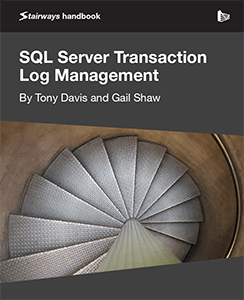As part of this Transaction Log internal series, In this article We are going to revisit some basic properties of Transaction log.Though architecture, purpose...
2012-11-18 (first published: 2012-11-15)
3,331 reads
Over the past three years since I first took a look at the
insides of a Transaction Log file, I have...
2012-11-16 (first published: 2012-11-06)
8,137 reads
Displays the last Full, Diff, and Log backup taken. If no backup has been taken that is displayed as well.
2012-05-24 (first published: 2012-05-15)
1,472 reads
Generally, you will have no need to worry about the number of virtual log files in your transaction log. However, if you use the default settings for 'auto-grow', you can end up with such 'fragmentation' in your transaction log as to affect performance noticably. How can this be avoided? How can you tell it's a problem? What do you do about it? Greg explains.
2012-11-23 (first published: 2012-05-01)
7,126 reads





